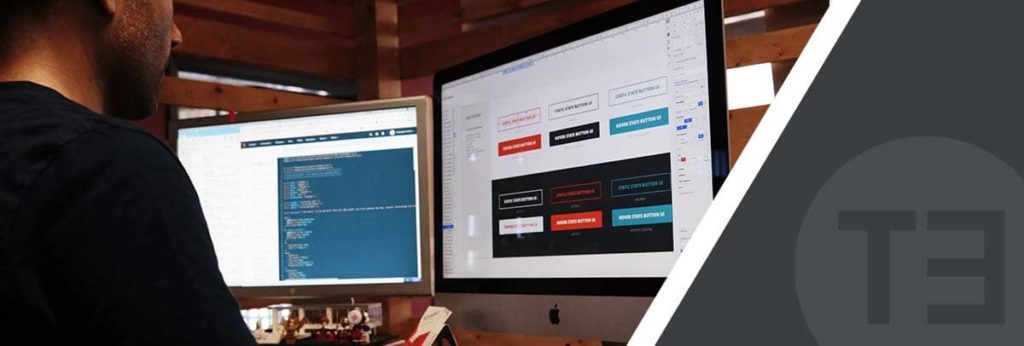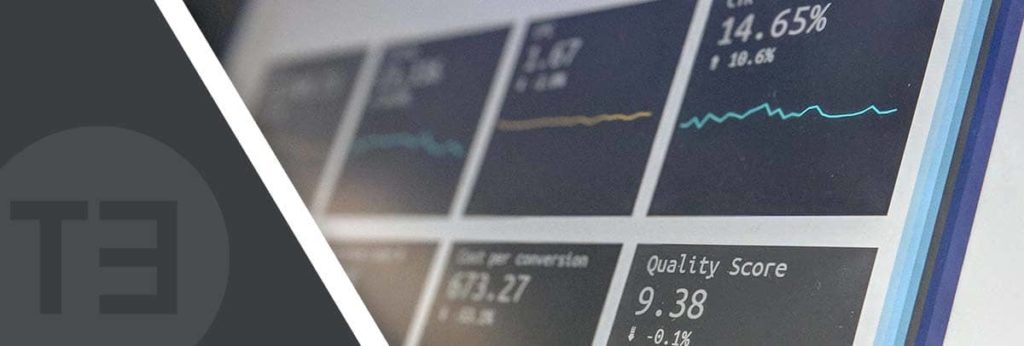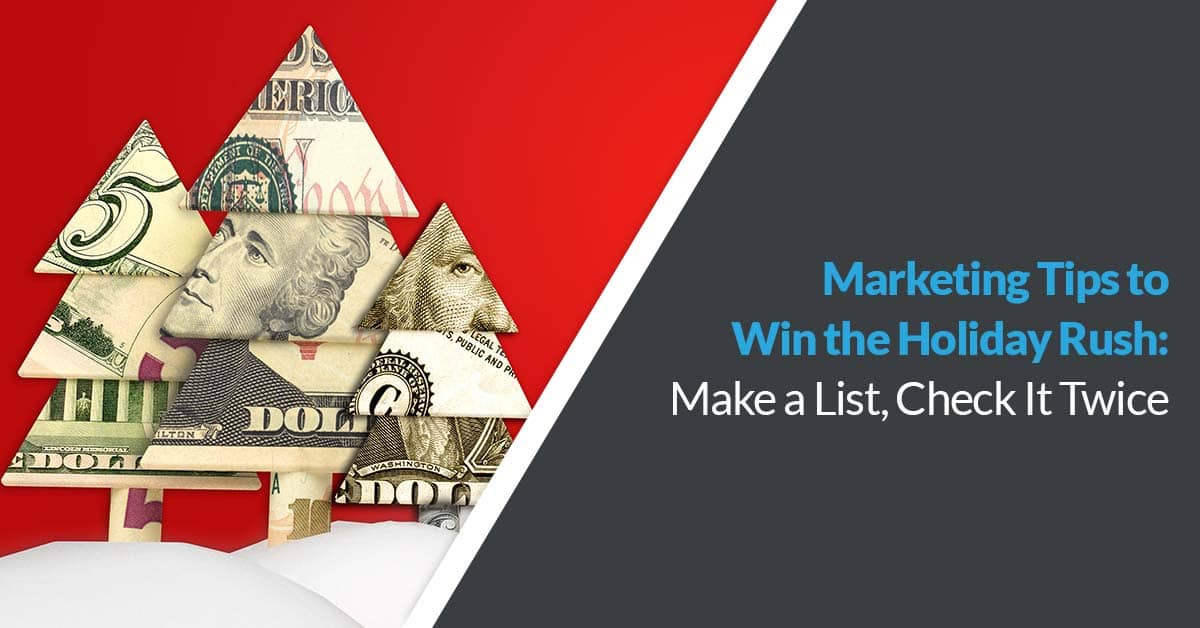The Ultimate Q4 Guide to Holiday Advertising
10 Minute Read
Tis the season for turkey dinners, Christmas trees, crowded stores, and full-throttle advertising campaigns. During the holidays, companies face intense competition for consumer attention. The right blend of planning, strategy, customization, and technology can go a long way toward making your business stand out during the seasonal rush and the frenzied sales events that drive it.
Ready to kickstart your holiday ad campaigns? We’ve got you covered. Below, we’ve given you a step-by-step guide to planning, executing, and tracking an effective campaign this season.
Holiday ad campaigns can be grueling and labor-intensive. If you need additional guidance and support with your company’s holiday advertising push, the digital advertising experts at Twelve Three Media can help with every aspect of the process. Contact us now, before it’s too late to get your message in front of all the holiday noise.

Identify the Key Dates
1. Halloween
Start planning: October 3
Launch campaign: October 24
End campaign: October 31
More than just a reason to fight with your partner for refusing to dress up in a cheesy couple’s costume, Halloween is also a major spending event. In fact, the creepy holiday raked in more than $8 billion in 2020, a year when Covid squashed countless holiday plans. Depending on your type of business, you can add a spooky twist to your website and ads or launch limited-time offers that take advantage of the spending thrust of the holiday.
2. Thanksgiving
Start planning: October 24
Launch campaign: November 16
End campaign: November 24
From a commercial standpoint, Thanksgiving is overshadowed by both Black Friday and Cyber Monday. However, Turkey Day has recently become a significant online shopping event in itself. In fact, in both 2020 and 2021, Thanksgiving Day sales exceeded $5 billion. Giving your customers special deals and discounts on this holiday is a great way to show them how thankful you are for their business.
3. Black Friday
Start planning: October 24
Launch campaign: November 17
End campaign: November 25
Black Friday, the modern phenomenon of sweet deals and box-store riots, is a bankable money-maker that continues to generate excitement and profits for businesses year after year. In 2021, approximately 155 million Americans shopped during Black Friday.
Even though Black Friday started as an event to encourage shopping in brick-and-mortar stores, businesses of all kinds can take advantage of the spending fever online, as well.
2. Small Business Saturday
Start planning: October 24
Launch campaign: November 18
End campaign: November 26
Small Business Saturday falls right after Black Friday. On this day, consumers are encouraged to support locally-owned small businesses in their communities. Initially started by American Express in 2010 as a way to promote small businesses, the U.S. Senate passed a resolution recognizing Small Business Saturday in all 50 states.
If you run a small business, it is worth taking advantage of this opportunity to serve consumers who want to support local companies like yours.
3. Cyber Monday
Start planning: October 24
Launch campaign: November 18
End campaign: November 28
Cyber Monday is online retailers’ answer to Black Friday. Consumers spent $10.7 billion on Cyber Monday in 2021. Even though 2021’s Cyber Monday pulled in 1.4% less than it did in 2020, it is still the year’s biggest day for online shopping. This is the perfect time of year to offer special discounts for online purchases.
4. Giving Tuesday
Start planning: October 24
Launch campaign: November 24
End campaign: November 29
Giving Tuesday wraps up the nearly week-long shopping blitz following Thanksgiving. This day is intended to encourage charitable donations from individuals and companies alike. In 2021, Americans contributed $2.7 billion on Giving Tuesday – 9% more than in 2020 and a 37% increase since 2019.
Your business could harness the power of this special day by donating a percentage of your proceeds to charity. This can show your customers that you care about your community, potentially earning the respect of those who use your products or services.
5. Christmas
Start planning: November 14
Launch campaign: December 15
End campaign: December 25
For many businesses, Christmas is the focal point of the holiday season. Most retail stores see a significant sales surge during this time. Although many shoppers start to buy stocking stuffers before the Xmas shopping season officially begins, roughly 40% of Christmas sales happen between December 15th and the 24th.
6. End of the Year
Start planning: November 28
Launch campaign: December 26
End campaign: January 1
As 2022 comes to an end, countless businesses will offload excess inventory by hosting clearance sales. Year-end sales are the perfect way to close out the year and prepare for a strong start to 2023.

Define a Budget
When preparing any advertising campaign, you need to have a clear picture of how much you plan to spend on your efforts. If you don’t have a creative team, you’ll need to figure that in, in addition to your ad spend. Setting a budget upfront lets you define your parameters and know how to proceed.
Some advertising platforms (like email ad banners) have smaller spends but are less effective than platforms like Facebook or PPC, which have higher cost-per-click rates but are more effective.
Some channels – such as Instagram, Facebook, and TikTok – are ideally suited to support image and video ads. If you know the budget, you can plan for what to create and where to leverage it.

Determine Your Goals
In addition to knowing how much you expect to spend, you need well-defined goals and KPIs in order to measure your success.
Brand goals, for example, may include objectives like awareness or consideration, while your KPIs may involve metrics like:
- Views
- Clicks
- Impressions
- Reach
- Engagement
- Click-through rate (CTR)
- Conversion
- Acquisition cost
Your ad content will vary based on the goals and KPIs you define, so it’s a good idea to figure this out at the beginning.

Prepare a Landing Page
Landing pages are essential tools for driving sales any time of the year, but they’re even more necessary during the holidays. A landing page is a webpage that focuses on converting customers for a specific offer. In addition to capturing direct sales, landing pages can be used to collect email addresses, gather market research, and generate leads. The best landing pages should provide a quick and seamless checkout.
The website design and development team at Twelve Three Media has mastered the art of effective, world-class landing pages. If you don’t have an in-house team with significant experience creating these crucial tools, this is one area where you don’t want to skrimp. Call us today.
When creating your landing page, keep these best practices in mind:
1. Keep Landing Pages Simple and Easy to Navigate
Eliminate conversion barriers by removing distracting navigation, visual clutter, competing offers, and any other content that isn’t relevant to the offer you’re promoting. Keep your content concise. Lead with an attractive image, an irresistible call to action (CTA), and a “buy now” button. Be descriptive while keeping copy brief. Some people will come to your landing page ready to buy, so make it easy for them to do so.
2. Make Sure the Page Loads Quickly
Your landing page should load in two seconds or less. If it’s loading slower, you’re going to lose sales, simple as that. Optimize your page for speed and get help if you don’t know how.
(Pssst … we can get your page running faster than a Black Friday shopper chasing the last big screen TV – just give us a call).
3. Sprinkle In Several CTAs
In addition to a strong CTA at the top of your landing page, be sure to add multiple CTAs with varied messaging to appeal to different buyers. Your first CTA can focus on price or creating a sense of urgency, while other CTAs could focus on specific product features or create more emotional connections with buyers.
4. Use High-Quality Images
Shoppers aren’t lured by walls of poetic text. If you want to capture attention and build emotion, you need snappy copy and high-quality images. If you’re selling a product, show it from different angles. Feature pictures of people using and enjoying your product or service to help potential buyers envision the benefits for themselves or their gift recipients. Too many photos can be overwhelming, so use images strategically.
5. Include a Video
A picture is worth a thousand words. That means a thirty-second video at 24 frames per second is worth about 720,000 words. That’s pretty good. A brief video can increase the emotional connection with customers and create more excitement or urgency.
Need help making a show-stopping, sales-driving video that cuts to the chase and converts customers? You guessed it, we’ve got you covered there, too.
6. Create Urgency
It’s no joke that manufacturing limitations, product availability, and shipping times are berserk during the holidays. Make those facts immediately apparent to your customers. Emphasize scarcity and order deadlines clearly. This will create a sense of urgency for your customers while also managing their expectations.
7. Tie Your Landing Pages to Ad Campaigns
Connect your landing page to your advertising campaigns to track their performance. Install the appropriate tracking pixels on your site and use the URL of your landing page as the final destination for your ad.
When connecting your landing page to your ad campaigns, make sure that the branding, messaging, and imagery are consistent to ensure customers know they’ve arrived at the right place.

Advertise on the Platforms Your Customers Use
Don’t waste time and money. Advertise on the platforms your customers use. Every advertising channel has a niche audience. If you know who you’re advertising to, you can select the appropriate platform and optimize your ad performance.
For example, print and radio ads can be effective for middle-aged and older audiences, while TikTok and Snapchat have a comparatively younger draw. Knowing this can help you pick the top advertising channel for your brand.
Online advertising offers a unique ability to zero in on your ideal audience and deliver ads that are targeted, relevant, contextual, and timely in a way no other medium can. It lets you track your campaign’s effectiveness in real-time and make adjustments with the click of a mouse.
Social Media Advertising
Advertising on social media offers a number of advantages. You can utilize targeting features that allow you to reach highly specific audiences, leverage a variety of ad formats, and invest in specific advertising efforts that drive leads and sales for your business.
The most popular social media platforms are:
- Facebook: Largest age group is 25-34; 57% male, 43% female
- Instagram: Largest age group is 25-34 (users aged 18-24 is a close second); 51% male, 49% female
- LinkedIn: Largest age group is 25-34; 52% male, 48% female
- Twitter: Largest age group is 18-29; 62% male, 38% female
- Pinterest: Largest age group is 50-64; 22% male, 78% female
- YouTube: Largest age group 15-35; 54% male, 46% female
- Snapchat: Largest age group is 15-25; 46% male, 53% female
- Tiktok: Largest age group is 10-19; 39% male, 61% female
In addition to the broad demographic data, social media advertising often allows you to advertise to specific groups based on characteristics like location, cultural views, and spending capacity, to name a few.
Paid Search Advertising
Paid search advertising allows you to capture your audience’s attention in a more targeted way than with organic search alone.
Search ads offer the ability to anticipate the needs and desires of potential customers and deliver ads that are highly contextual. Then you can use analytics to analyze and improve your ads to reach more people.
Search ads are designed to appeal to consumers who are currently looking for an answer or product. Google Ads – the paid-for results that appear above organic results when you search for something on Google – are the most common.
- Pay-per-click (PPC): This is a specific advertising model that allows you to only pay for the number of clicks that you get on your ad. PPC ads can be found on the SERP, but can also extend to affiliate marketing (a third party is paid to generate traffic) and display advertising (your ads are displayed on another website).
- Google Shopping: These ads work in a very similar way to traditional PPC ads and are an ideal option for selling a product. Highly targetable and measurable, they work based on keywords. They return lower cost-per-conversion rates than text ads. Google requires you to adhere to strict rules and systems regarding your online inventory.
- Google Local Service Ads (LSAs): This type of ad appears at the top of the search results for certain services, even above traditional PPC ad results. These types of ads are restricted to businesses in certain fields: household services, healthcare services, legal services, financial services, real estate, fitness services, child care and education services, and pet services.

Format Your Ads Specifically for the Platforms You Choose
With such a wide range of social media platforms to choose from, you can’t take a cookie-cutter approach to ad development. Every ad must be specifically formatted to meet the requirements of the platform on which you are advertising.
Facebook ads, for example, have strict specifications for image ads, video ads, carousel ads, and collection ads.
Once you’ve decided which advertising platform to use, research the specs to which you must adhere and develop your ads accordingly.

Have Analytics and Tracking in Place to Verify What’s Working
Google Analytics allows you to create up to 20 conversion goals for your business. These goals could be actions like filling out a form, requesting a quote, or completing a check-out in your online store.
Once your goals have been defined in Google Analytics, link your Google Ads and Analytics accounts to keep the data for both your website and your ad campaigns in one place. When your two accounts are linked, you can draw a direct line between how people interact with each ad and the actions they took on your website.
While it’s beneficial to see how ads influence the behavior of visitors on your site, this alone does not paint the whole picture. Offline tracking methods enable you to monitor non-digital actions like calls to your business or personal visits to a brick-and-mortar location. All of this information can be used to gain a full picture of your advertising campaign’s effectiveness.
You should track in-person interactions with customers to see whether people who found you online ended up becoming customers in real life. Many retailers do this by collecting an email at checkout to send an electronic receipt.
Analytics comprise the most important and complex aspects of any marketing campaign. There are countless metrics available these days, but if you don’t know the important ones to follow, you’re just spinning your wheels and burning money. The analytics and reporting team at Twelve Three Media uses industry-leading tools and honest, straightforward language to help you understand the effectiveness of your ad campaigns and the value you’re getting on every ad dollar spent.
Ready to deck your halls with killer ad campaigns that gobble up the competition? Contact Twelve Three Media to gain the unfair marketing advantage!
